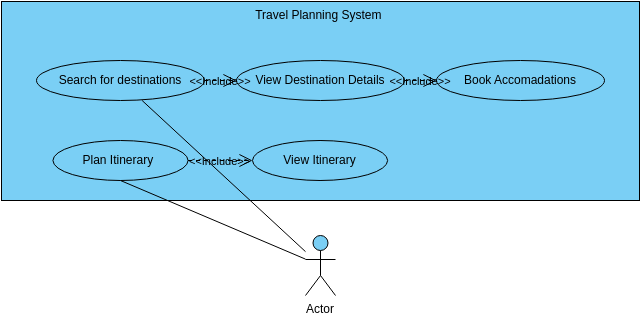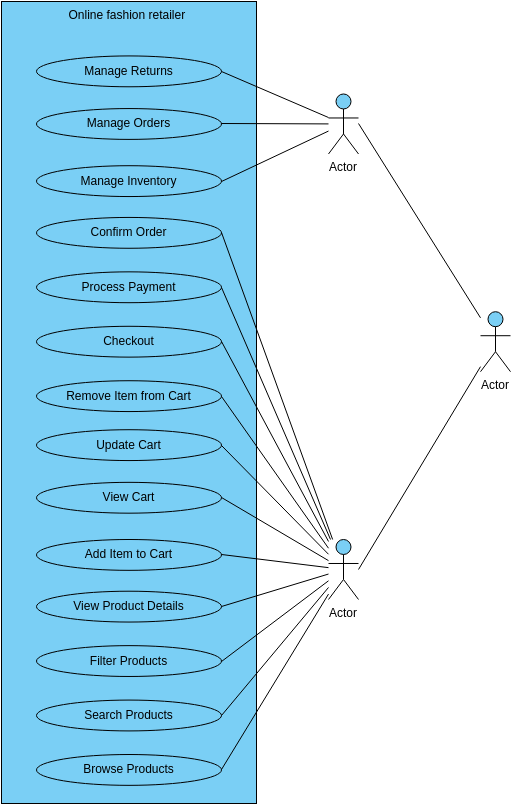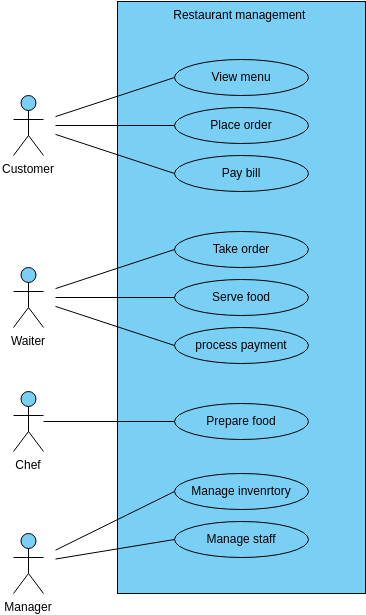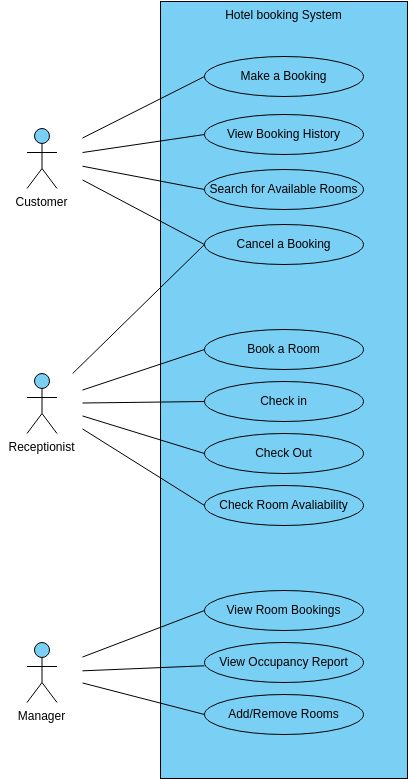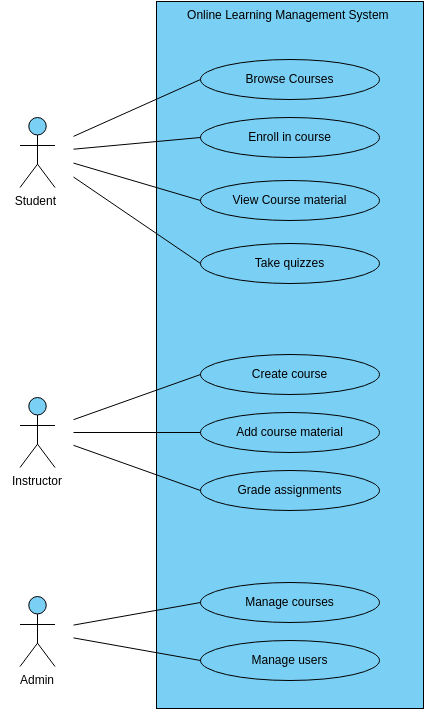Online Marketplace
An Online Marketplace is a software application designed to allow buyers and sellers to connect with each other online. The system typically includes features such as inventory management, order management, and payment processing. The use case diagram outlines the various tasks that can be performed within the system.
The Search for Product use case allows buyers to search for products based on various criteria such as product name, category, and price. Once a buyer has found the desired product, they can add it to their cart using the Add Product to Cart use case.
The Post Product for Sale use case allows sellers to post products for sale on the online marketplace. This typically involves providing basic information about the product such as its name, description, and price. Once posted, the product will be visible to potential buyers who can then purchase it.
The Manage Orders use case allows sellers to manage their orders on the online marketplace. This includes tracking the status of orders, updating order information, and communicating with buyers. Buyers can also manage their orders using this use case, including tracking the status of their orders and communicating with sellers.
The Manage Payments use case enables the online marketplace to process payments between buyers and sellers. This can include payment processing, refunds, and dispute resolution. The system can also generate invoices and receipts for buyers and sellers.
Benefits of creating this diagram
Creating a use case diagram for an Online Marketplace can provide several benefits. First, it can help to identify any gaps or areas of improvement in the system's functionality and ensure that all necessary use cases have been accounted for. This can help to avoid potential issues or errors that could arise during the system's implementation and use. By mapping out the various use cases, stakeholders can gain a better understanding of how the system works and how it can be leveraged to improve online buying and selling processes.
Second, the use case diagram can serve as a valuable communication tool between stakeholders, including online marketplace managers, developers, buyers, and sellers. It can help ensure that everyone involved in the system's development and implementation is on the same page and has a shared understanding of the system's purpose and functionality. This can help prevent misunderstandings and ensure that the system meets the organization's needs and expectations. Additionally, the use case diagram can help to improve collaboration between stakeholders, which can lead to a more successful implementation and adoption of the system.










